Creating a Hellstrip Garden

Indie originally started out blogging about creating a garden in the hard clay soil around her new red house in North Carolina. One big move later, and she is now learning about gardening in New England at her new place in Massachusetts. When she's not digging rocks out of her garden, you can find her trying to keep up with her two young kids or checking on her tomatoes in her greenhouse. You can catch her blog at Red House Garden or follow her on Twitter @RedHouseGarden.
When I first heard of hellstrip gardening, I immediately fell in love with the idea. The 'hellstrip' is a nickname given by gardeners to that strip of land between the street and sidewalk, also commonly called a 'parking strip'. It earns its nickname from how difficult it can be to grow plants there, thanks to such factors as glaring heat from the asphalt, poor, compacted soil, winter saltings, and abuse from plows and traffic. Normally hellstrips are just weedy strips of grass, and the idea of having a lush line of plants and flowers there instead was instantly charming to me. The hellstrip at the house where I moved into near Boston was more weeds than grass and just begging for a makeover!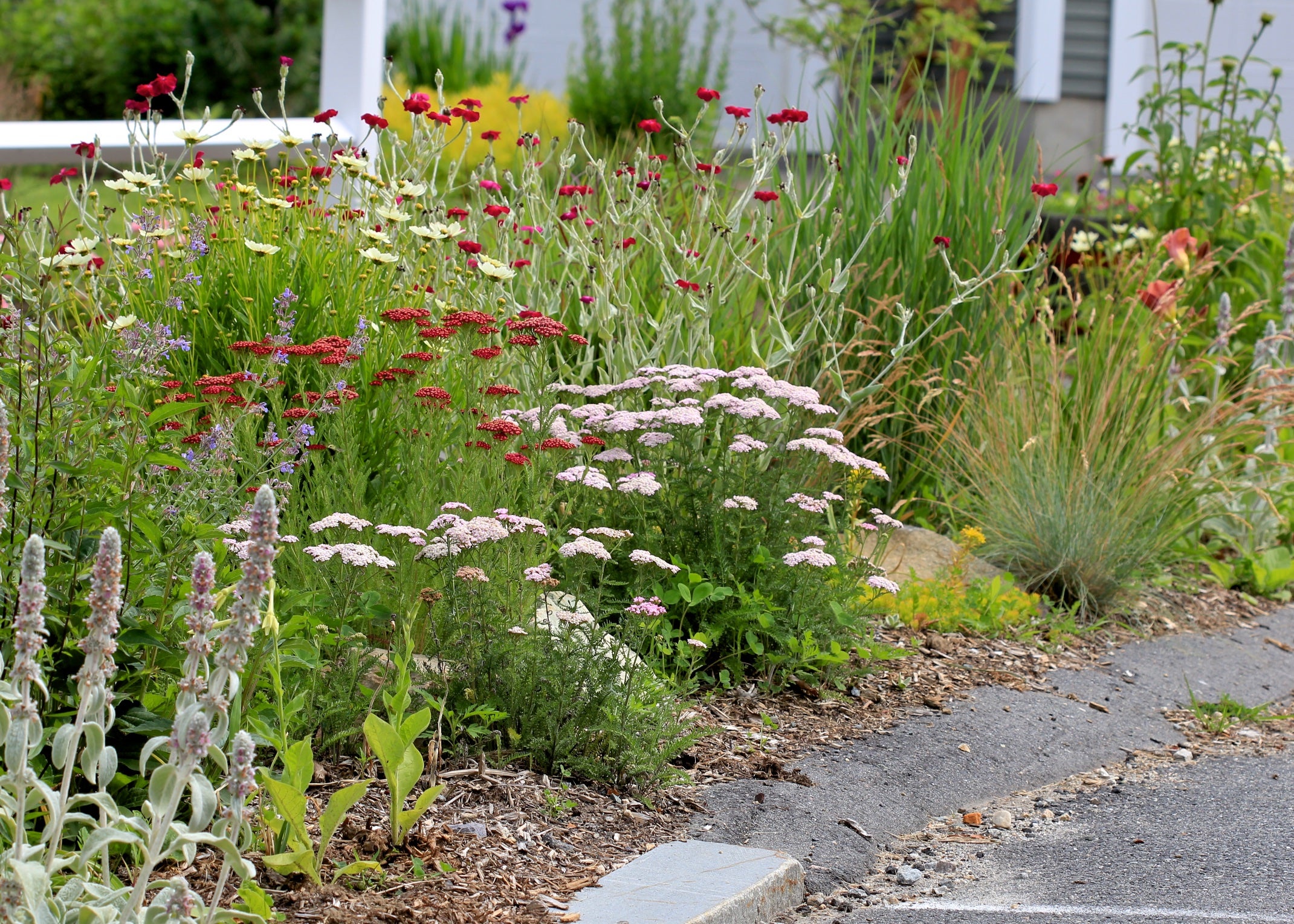
Having labored to put in smaller mailbox gardens near the curb at each house I've lived in, I knew I was in for a challenge when I decided to make an entire hellstrip garden. The first step to creating a hellstrip garden is the hardest, but most important: preparing the soil. Maybe fortunate others out there have nice, loamy soil, but in my experience, this strip near the curb is usually full of grass and/or weeds on top of compacted, gravelly dirt. Over the course of a few days I dug up sections, removed the top layer of grass, and then loosened up the layer of dirt underneath, amending it with compost as I went.
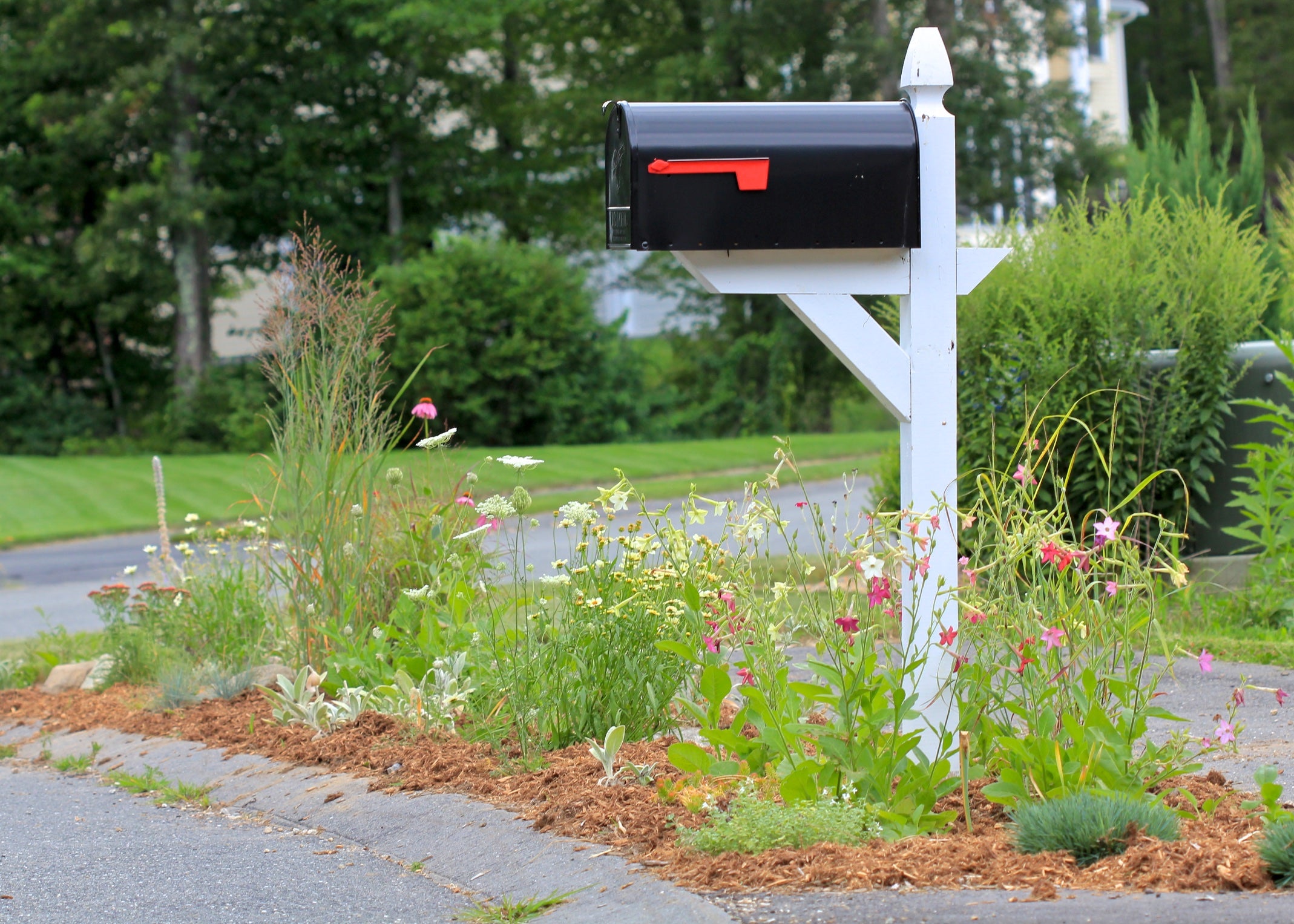
The next step, on the other hand, was the most fun - picking plants to go there! I chose the toughest plants I could find. Other gardeners also gave me extra, unwanted plants from their own gardens. Plants that spread quickly and might take over in a normal garden are often perfect for a challenging garden like this.
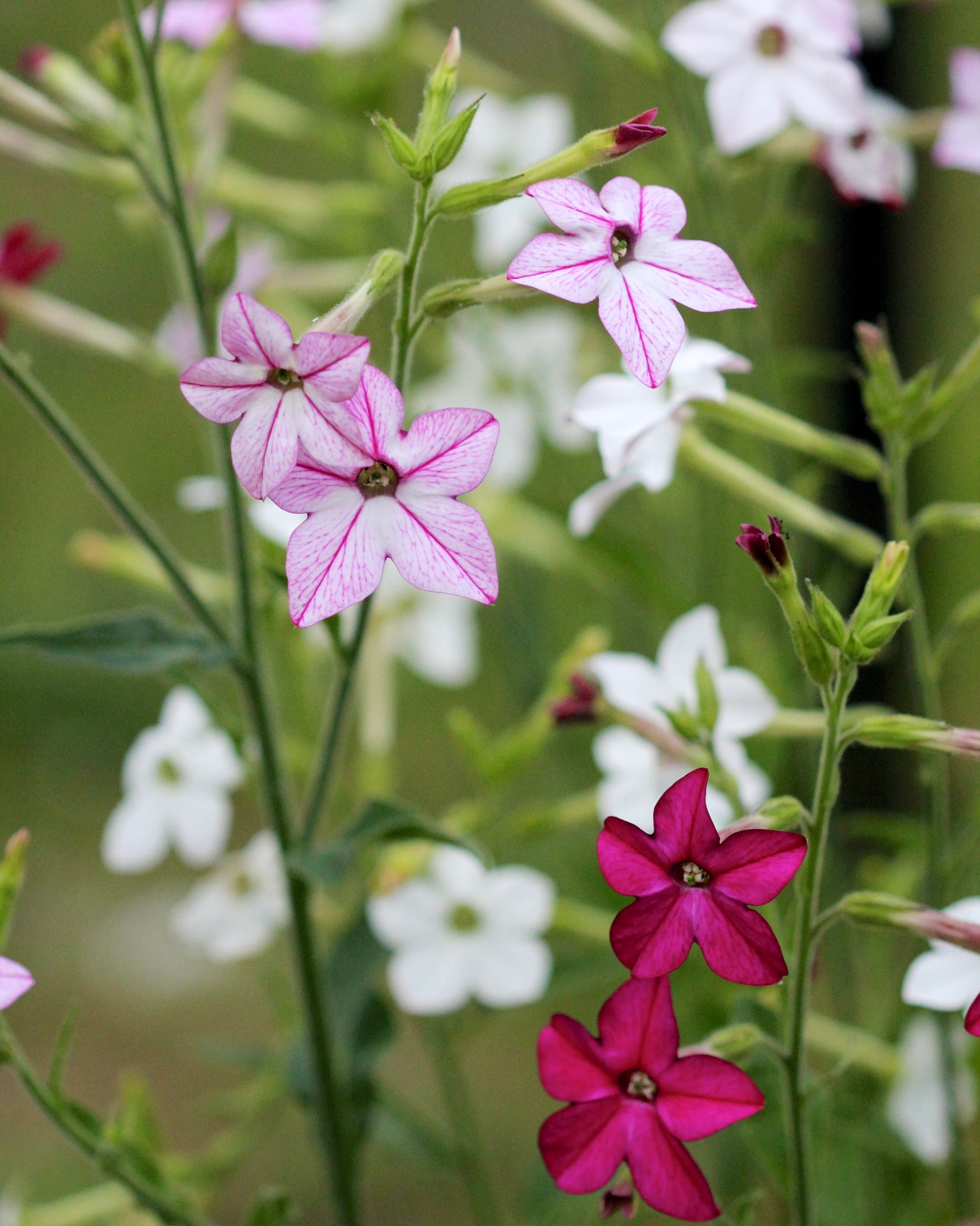
Some perennials that have thrived in my sunny hellstrip are Aster, Catmint, Coreopsis, Daylilies, Echinacea, Evening Primrose, Grasses, Lamb's Ear, Rose Campion, Rudbeckia, Salvias, Sedums, and Yarrow. Drought resistant annuals are great as well, such as Alyssum, Dusty Miller, Nicotiana, Portulaca, and annual Salvias. I especially love the ones that politely reseed themselves for new plants for following years.
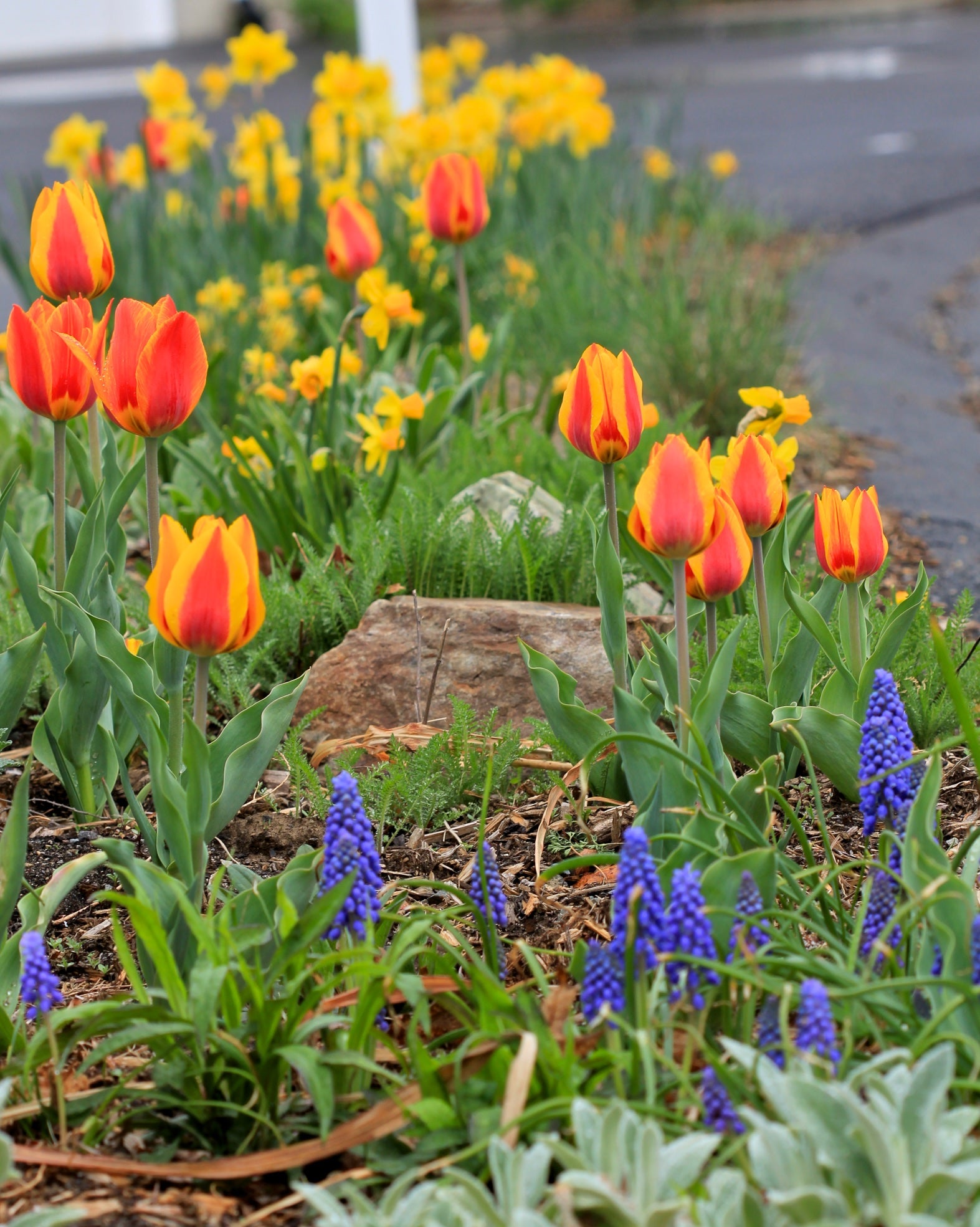
To extend the bloom season, I planted spring bulbs like Daffodils, Tulips, and Grape Hyacinth. I also added decorative rocks and stepping-stones for nice, low-maintenance touches.
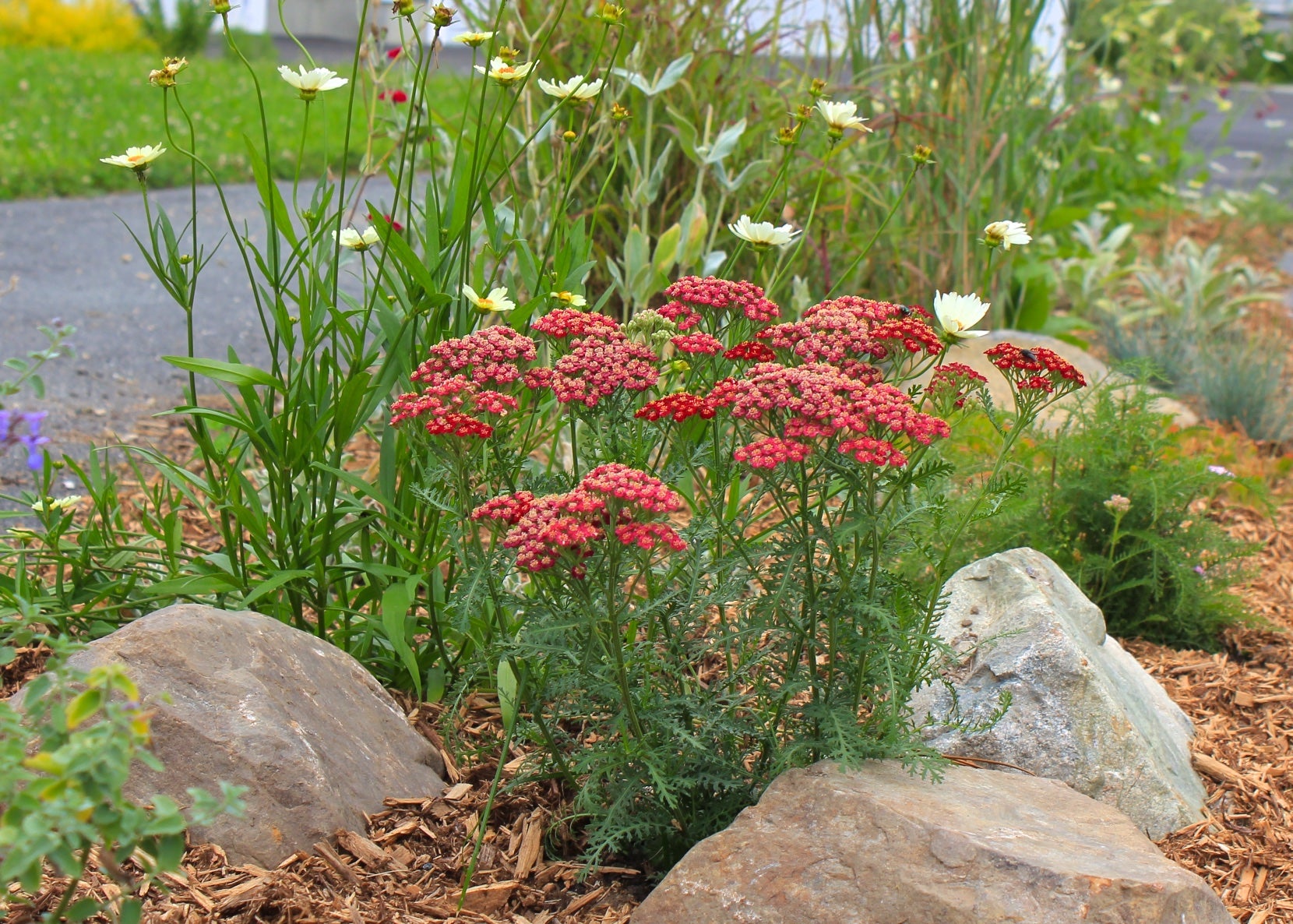
After putting in the initial plants, I put mulch to help the plant roots conserve water and watered regularly for a while after planting to help the plants get established. I also weed fairly regularly until the plants fill in. As time goes on, it is exciting to see the plants spread and take over the area.
Gardening tips, videos, info and more delivered right to your inbox!
Sign up for the Gardening Know How newsletter today and receive a free copy of our e-book "How to Grow Delicious Tomatoes".
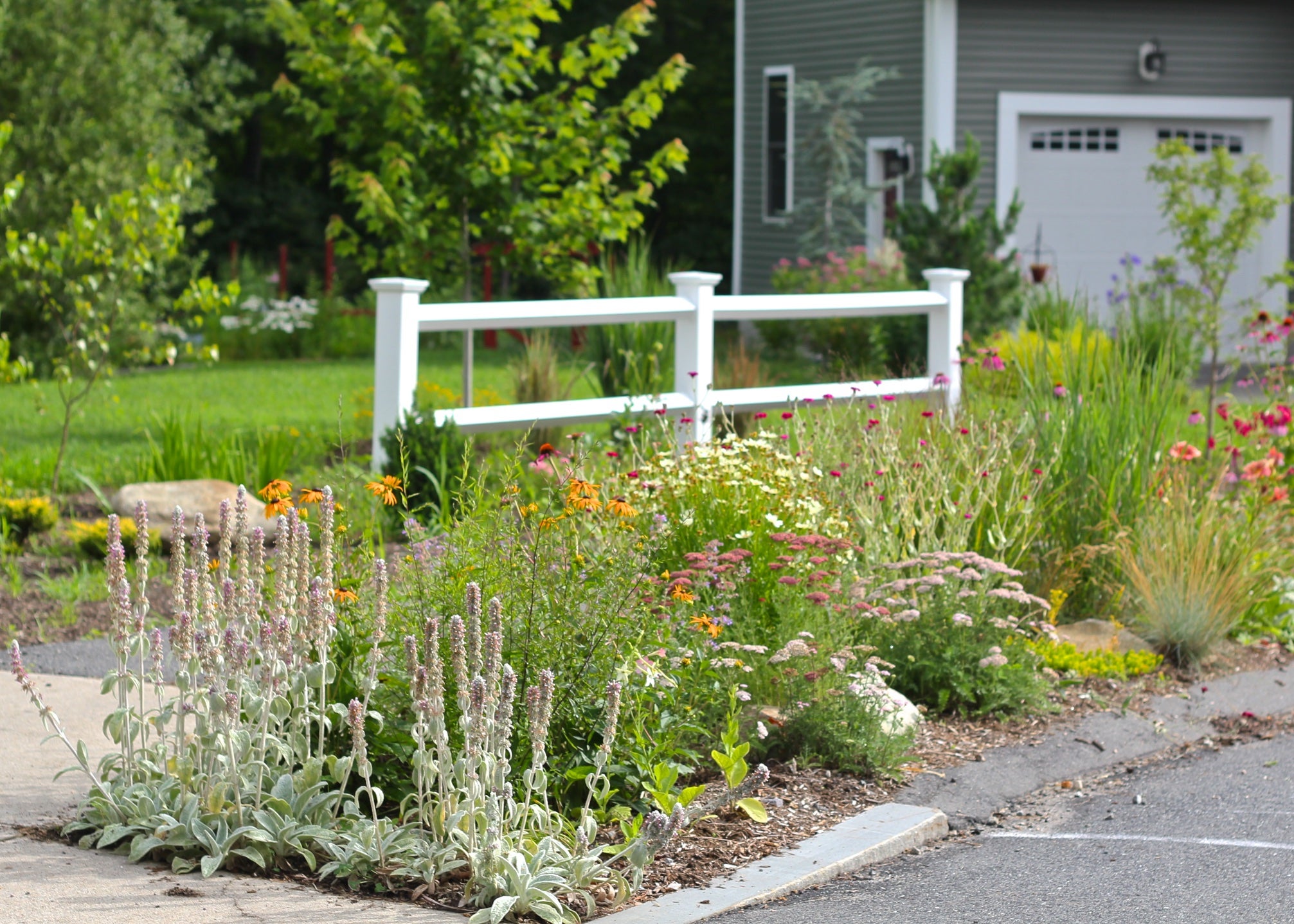
A few tips for those thinking of making your own: do make sure your garden won't be in violation of any town ordinances, and don't plant anything that will get so big that it creates visibility problems for traffic or walking problems for pedestrians. Look for the hardiest plants for your area to plant. It may be helpful to see what is planted in local parking lots and street medians. Other local gardeners and staff at locally owned nurseries can be great resources.

Creating a hellstrip garden, while somewhat challenging, has been such a rewarding project. My hellstrip is looking so much nicer than when it was just a weedy strip, and my mailman and neighbors who walk through get to enjoy it as well! Save Save

Laura Miller has been gardening all her life. Holding a degree in Biology, Nutrition, and Agriculture, Laura's area of expertise is vegetables, herbs, and all things edible. She lives in Ohio.
-
 Grow ‘Karl Rosenfield’ Peony Plants For The Ultimate Frilly Border Beauties And Cut Flowers
Grow ‘Karl Rosenfield’ Peony Plants For The Ultimate Frilly Border Beauties And Cut FlowersFor frilly double magenta peony petals infused with a heady fragrance, grow ‘Karl Rosenfield’ peony plants. Here’s how to cultivate the ultimate plushy blooms
By Tonya Barnett
-
 10 Common Composting Problems That Can Spoil Your Garden Gold – Plus Easy Fixes
10 Common Composting Problems That Can Spoil Your Garden Gold – Plus Easy FixesLearn how to troubleshoot common composting issues before they ruin your stash – from bad smells and bugs to materials not breaking down as they should.
By Susan Albert